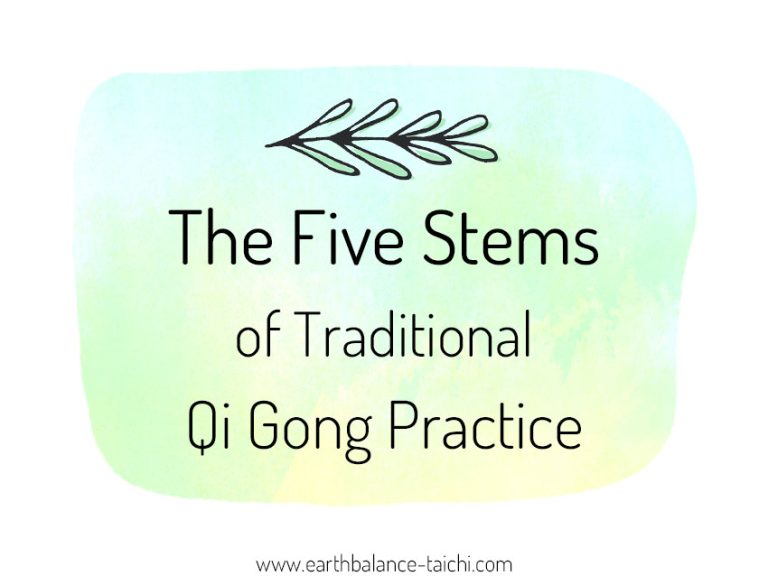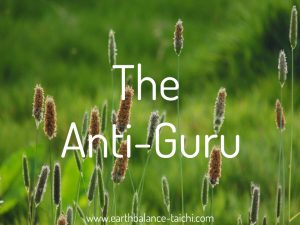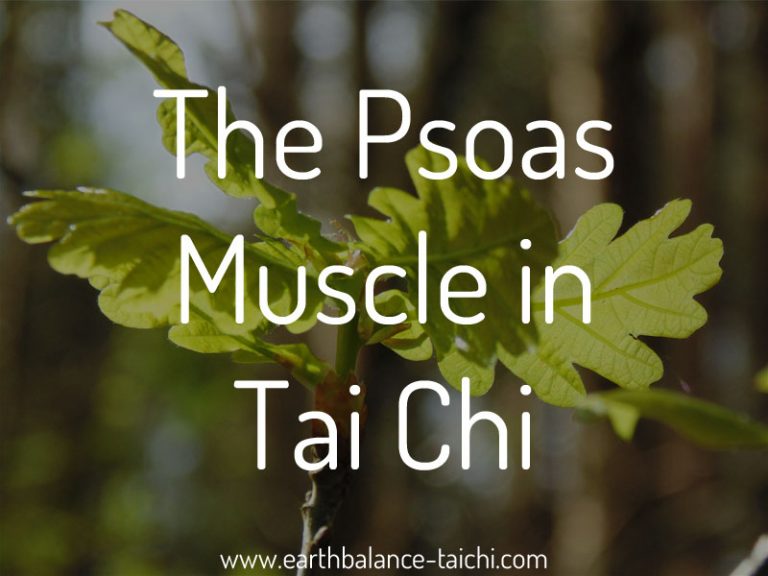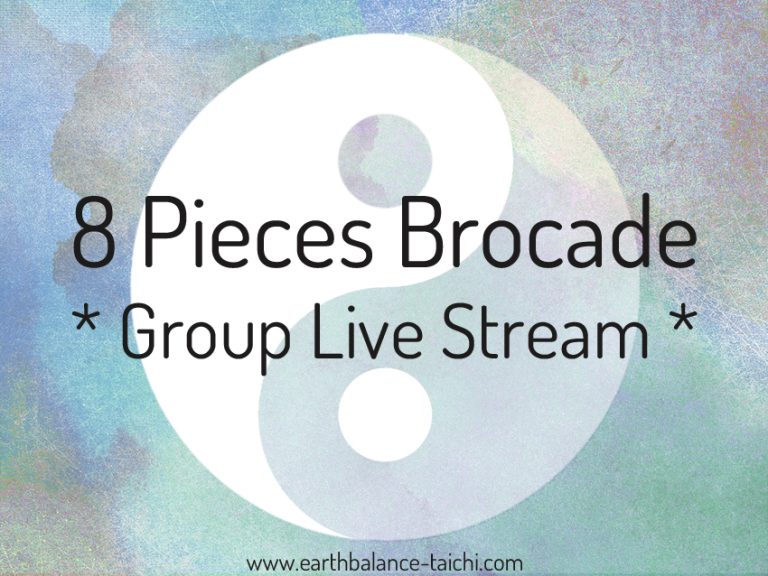Spring Qi for the Liver
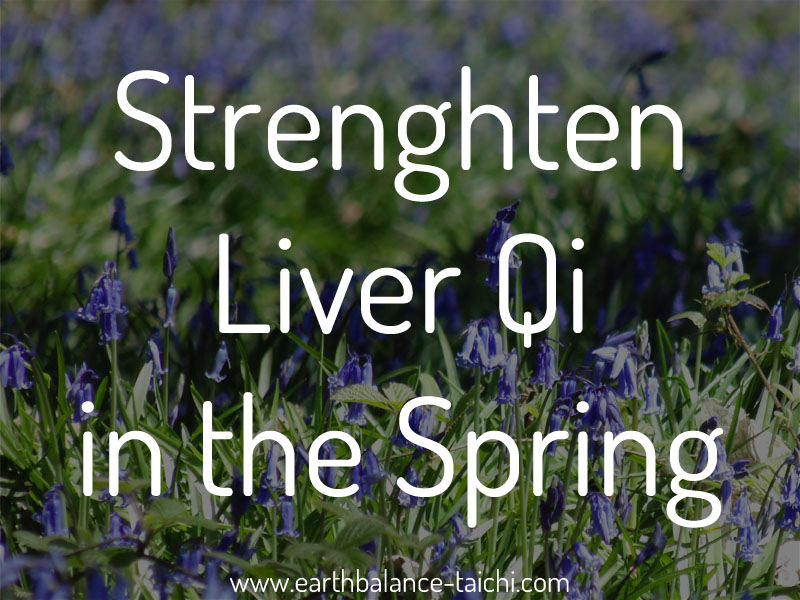
Spring Qi for the Liver
Spring is a time of re-birth and new growth. A time for outward expression, like the first signs of plant life that burst out of the earth. A time for new beginnings and waking up. Spring is governed by the wood element and the liver organ in Traditional Chinese Medicine (TCM). Here are my suggestions for supporting your liver in spring time. This article explores Spring Qi for the Liver.
The liver is a yin organ and is paired with the gallbladder a yang organ. The liver meridian channel travels from the big toe up the inside leg, over the groin up to follow the line of the first five ribs. The liver is responsible for a variety of functions:
- Storage, flow and volume of blood in the body
- Sending blood to the muscles
- Regulating qi flow within the whole body
- Eyes
- Nails
- Sinews and tendons
- Sour taste
- Gynaecology, menstruation, menopause
The potential symptoms from a deficient liver in Traditional Chinese Medicine are:
- Eye issues, floaters, red or bloodshot eyes, blurry vision, dry or itchy eyes
- Brittle and dry nails, nail cracks and ridges
- PMT, painful periods, cramps, heavy blood flow, missed periods
- Symptoms of menopause
- Sinew and tendon inflexibility, spasms, cramps and numbness
- Tight muscles
- Outbursts of frustration, anger, irritability, jealousy
- Bitter taste in mouth, dry mouth, thirsty
- Red face
- Headaches and migraines
- High blood pressure
- Lump in throat
- Pain under the ribs
- Abdominal pain, constipation and diarrhoea
- Feeling stuck
There are many different types of liver and gallbladder deficiency within Traditional Chinese medicine, associated with the five element theory and the meridian channels.

Emotions
The liver in Traditional Chinese Medicine is associated with the following emotions:
- Positive: Kindness, generosity, patience
- Negative: Anger, jealousy, frustration, envy
Rather than the emotions relating to a psychological brain state, in Traditional Chinese Medicine the liver is associated with specific emotions. To bring these emotions into balance, the liver is supported and strengthened using the five element theory.
The Five Stems Video Course
Interested to know more about Qigong? Learn about the five stems of traditional learning here. Join my FREE five day mini video course available to newsletter subscribers via this link.

Taoist associations with the liver
The following table explores the Taoist associations with the liver:
| Five Element Theory | The Wood Element |
|---|---|
| Associations | Awakening, Growth, Activity, Upward, Outward ,New Beginnings, Creation, Nourishment |
| Season | Spring |
| Time | Dawn |
| Direction | East, South East |
| Celestial Animal | Dragon |
| Yin or Yang | Yin, Feminine |
| Movement | Uplifting |
| Power | Expansion |
| Flavour | Sour |
| Sound | Crash |
| Weather | Windy |
| Climate | Windy |
| Age | Birth |
| Stage of Life | Birth |
| Organ | Liver, Gallbladder |
| Exterior | Plants, Trees, Shrubs, Tall Pagodas, Watchtowers, Obelisks, Pillars |
| Interior | House Plants |
| Material | Living Wood |
| Shape | Rectangle |
| Form | Columns, Tall, Vertical, Upright, Oblong, Pillars, Chimneys, Skyscrapers |
| Images | Forests, Countryside, Gardens, Trees, Landscape |
| Colours | Green, Blue Green |
| Yin (Feminine) | Unhealthy Plants, Bamboo, Grass |
| Yang (Masculine) | Healthy Plants, Oak |
The 5 Element Cycles and Relationships
The liver is the wood element in Traditional Chinese Medicine. In the five element theory, the other four elements interact with the wood element. The concept of the five elements is to bring everything back into balance, each coexisting without dominance. The following graphic looks at the relationship and cycles between wood, fire, earth, water and metal.
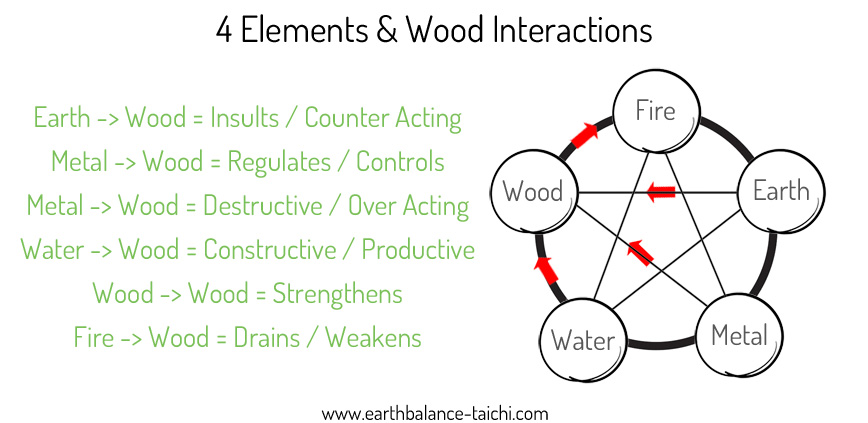
A Doctor of Traditional Chinese Medicine would determine which of the five elements could be utilised to help strengthen, weaken, control or regulate the wood element. An example would be if the wood element was deficient, then the water element would be used to support and the wood element would be used to strengthen. If the wood element was too strong, then the fire element would be used to drain, or the metal element would be used to regulate.
Spring Qi for the Liver - Movement
To nourish your liver with exercise, look for movements:
- that stimulate the liver meridian channel and the liver/waist/abdomen area
- that stretch and flex the sinews and tendons gently and repetitively with a coiling, expanding and compressing motion
- that stimulate blood flow and dilation of blood vessels
- that are performed slowly and calmly to help activate the natural relaxation response which help to release frustration and soothe anger
The following exercises help strengthen the liver in Traditional Chinese Medicine.
Liver Movement in 8 Pieces of Brocade Qigong
7. Clench the Fists and Glare Fiercely
- Health: Strengthens knees, legs, waist and back, coordination, helps lessen anger.
- TCM: Stimulates the liver.
- Movement: Step out into a horse stance. Closed fists with the thumb on the inside sit on the hips Push a single fist out by turning the waist. Complete the flowing hand postures whilst glaring at the fist. Withdraw the fist to the hip.
- Spine involvement: The spine is held upright and stable via the opposing pressure between the rotating fists and the force going through the legs and feet into the ground.
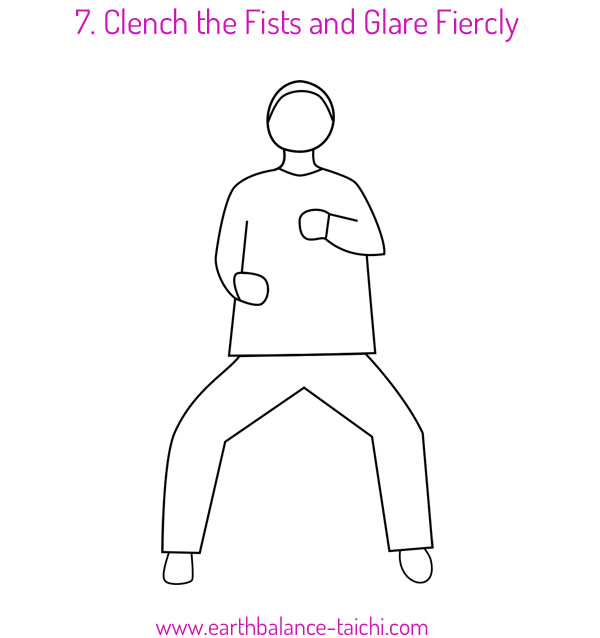
Liver Movements in Five Animals Qigong
Raising the Tiger's Paws
- Organ: Stimulates the liver by the gazing eye movements, stretching the sinews in the hand postures and when raising the arms.
- TCM: Circulation of Qi in the Sanjiao (thoracic and abdominal cavities). The liver also nourishes the flow and storage of blood and strengthens the bone marrow.
- Health: Grip strength. Increases blow circulation to the hands and fingers. Strengthens the lung system through deep breathing.
- Key Movements: Focus on the trunk as the arms raise up passed the abdomen, chest, neck and head whilst maintaining an upright spine. Look for a cycle of expansion and compression in the abdomen and chest as you flow through the movement.

Swaying like a Bear
- Organ: Strengthens the stomach, pancreas and spleen.
- TCM: Qi circulation in the spleen. Nourish and stimulate the liver and kidneys, regulates emotions and strengthens bone marrow.
- Health: Strengthens and relaxes the waist and lower back muscles, hip joints, leg muscles. Stimulates the function of the upper and lower abdomen.
- Key Movements: Focus on creating fluid stability in the lower body, moving your centre of gravity forwards and backwards in a squatting stance. The waist drives the rotation of the body, which creates the swaying arms, helping to expand and compress the internal organs.

Liver Movement in Earth Qigong for Women
Dragon and Phoenix
TCM: Stimulates the liver.
Health: Stimulating blood flow in the lower abdomen through coiling waist movements.
Key Movements: Similar to Tai Chi silk reeling, this movement flows through a figure 8 movement in the lower body, with arms that co-ordinate.
Spring Qi for the Liver - Stillness
To nourish your liver through meditation, there are a variety of ways to practice. From abdominal breathing techniques where you visualise colour, emotions to a healing sound. The following practices will help to nourish and support the liver organ.
Health: Activation of the natural relaxation response when breathing correctly at 5 breaths per minute or less. This switches the body into a neutral state, softening negative emotions (e.g. anger, frustration, envy that relate to the liver organ), releasing happy brain chemicals and relaxing the physical body.
Key Movement: The lower abdomen, side ribs and lower back expand on the inhale and relax on the exhale. The diaphragm must engage during deep abdominal breathing to ensure the body is set up to relax. Shallow chest breathing would mimic the stress response and induce physical stress reactions.
Hand Position:
- Hold the palms over the right hand side of the body, below the ribs over the liver area.
Action:
- Smile down to the liver, filling it with kindness and the colour green.
- Thank you liver for all the hard work it does for your body.
- Inhale a green light or mist into the liver organ, breathe in the positive emotions of kindness, generosity and patience.
- Exhale a grey mist, releasing the emotions of anger and frustration.

The Healing Sounds for the Liver
Hand Position:
- Start with hands resting on top of thighs, palms facing upwards.
- Bring the hands to the liver area.
- Inhale and raise arms above your head, interlink your fingers, pressing palms to the ceiling and lean to the left a little as you make the sound, keep looking up.
Sound:
- Exhale with ‘shhhhhh’ like telling someone to be quiet.
Zhan Zhuang / Standing Practice
Take you stillness meditation practice into an energising standing posture. Choose your pose, from embracing a tree stance to earth energy, all stances are welcome. Continue the inner smile practice to nourish and strengthen the liver by visualising breathing in the colour green, or a warm green light into the liver area under the right ribs. All to recycle the emotions associated with the wood element.
Liver Foods
In Traditional Chinese Medicine, the liver is strengthened by the following foods:
- Sour taste, vinegar, sweet and sour flavours.
- Green vegetables with leaves that grow upwards: broccoli, watercress, cabbage, greens, celery, lettuce, radish leaves, spring onions, seaweed, asparagus, rocket, beetroot, carrot, spinach, artichoke.
- Herbs: mint, chives, basil, fennel, lemon balm, rosemary, bay leaves, marjoram.
- Lightly cooked, sautéed and steamed food.
- Raw fruit and vegetables.
- Sprouted grains and seeds e.g. mung beans.
Avoid
- Over cooking food.
- Long cooking times.
- Alcohol.
- Spicy food.
- Hot food.
Spring Qi for the Liver - Please speak with your doctor prior to starting a new exercise programme. This article is for information purposes only and must not be taken as medical advice.
